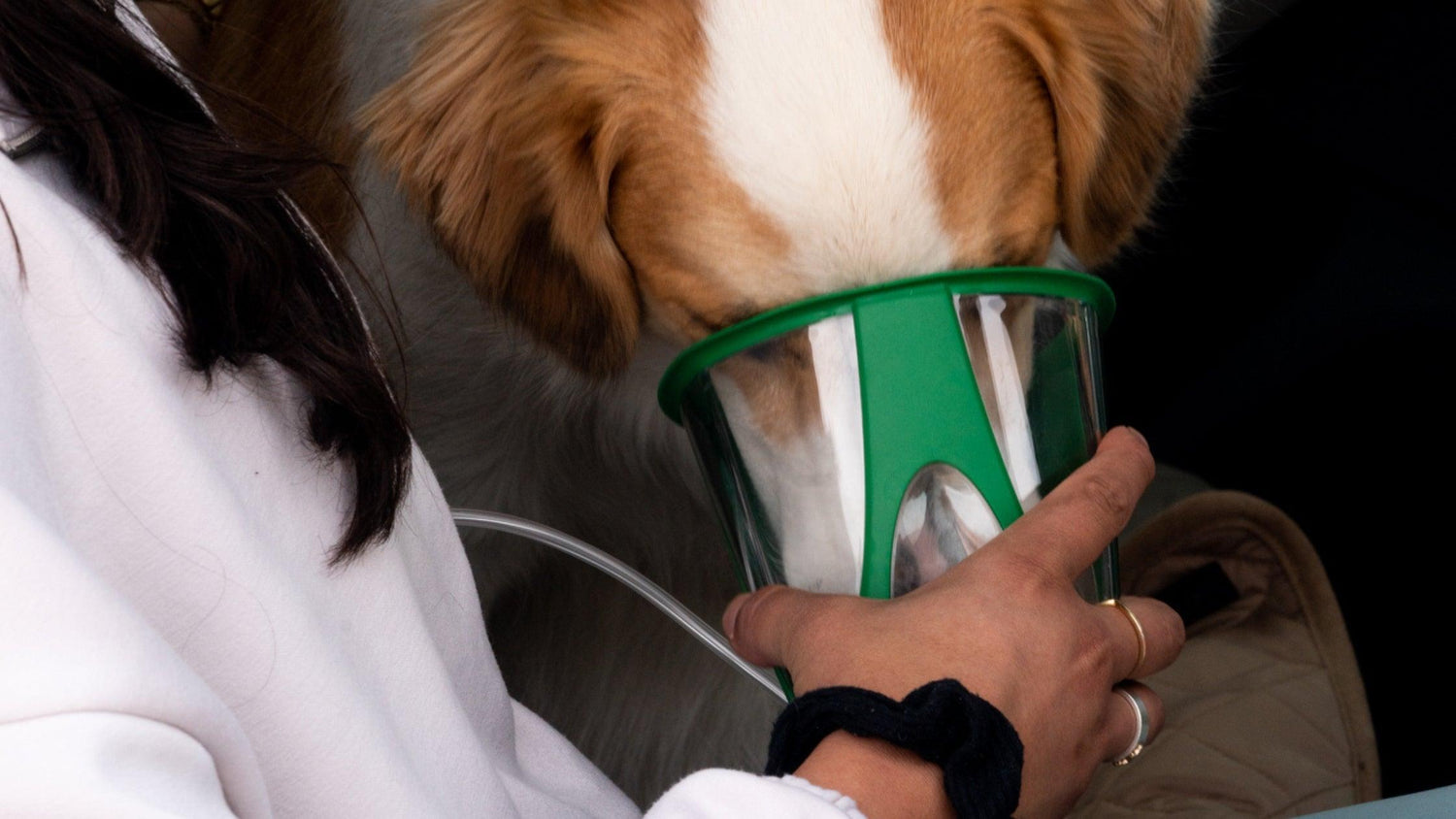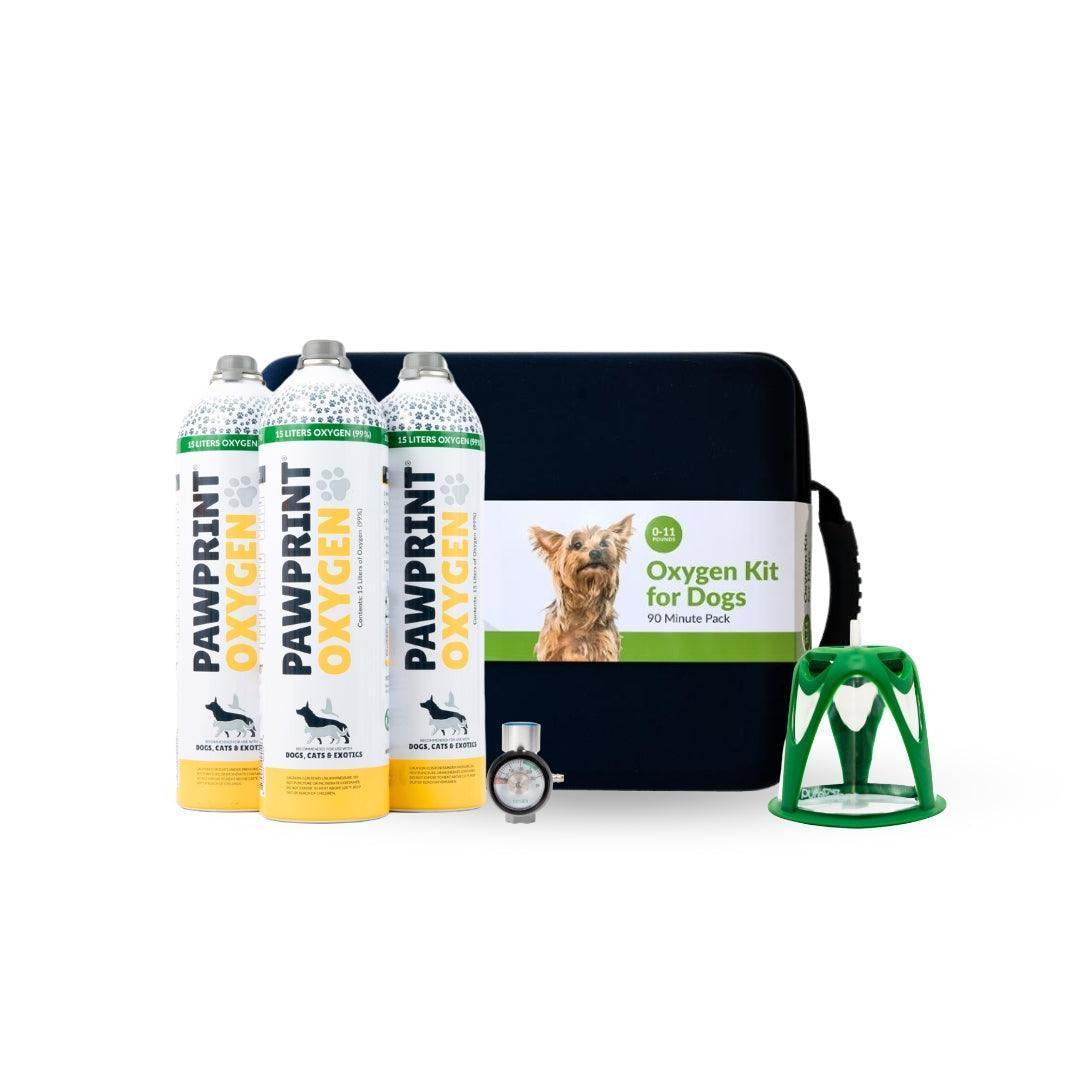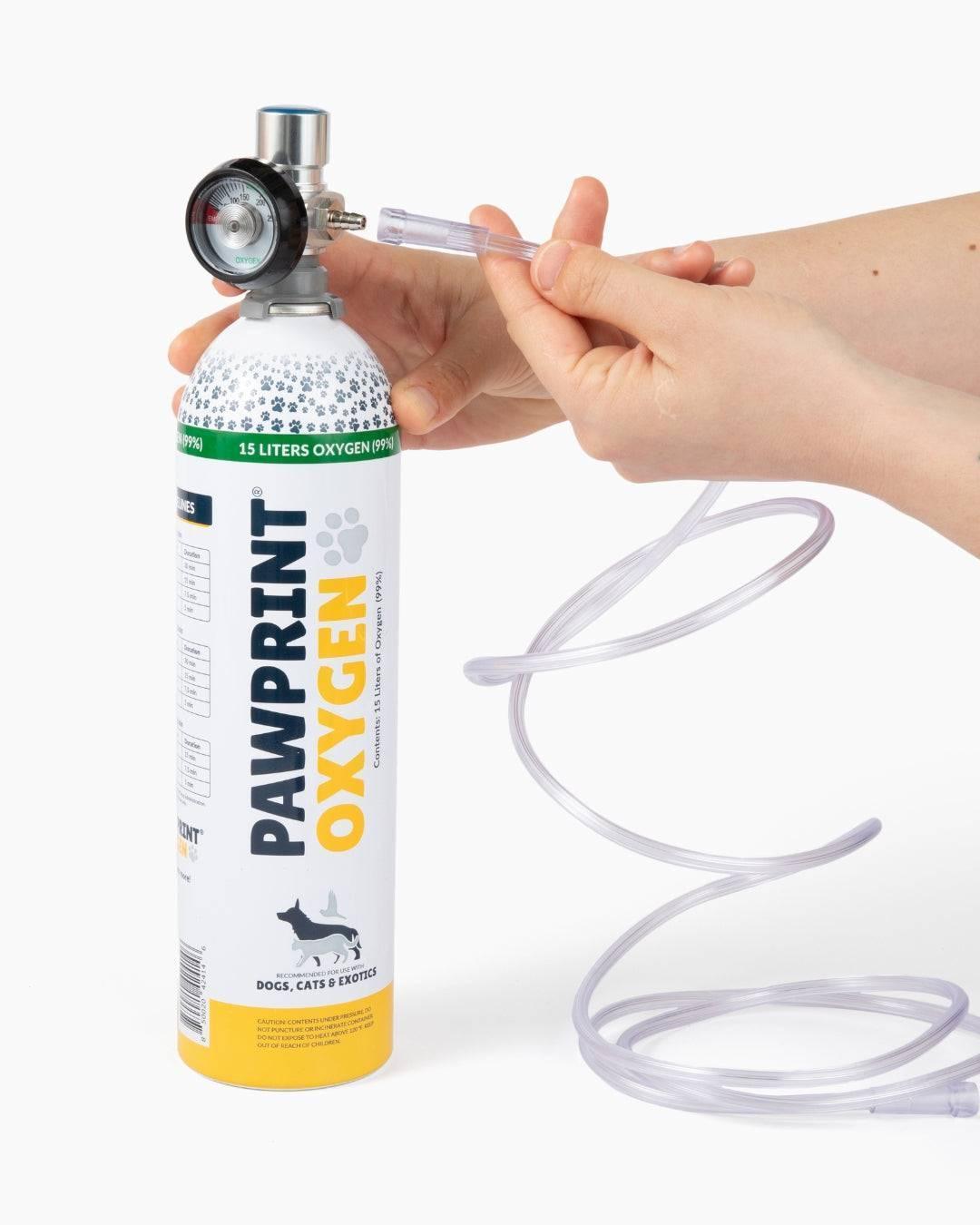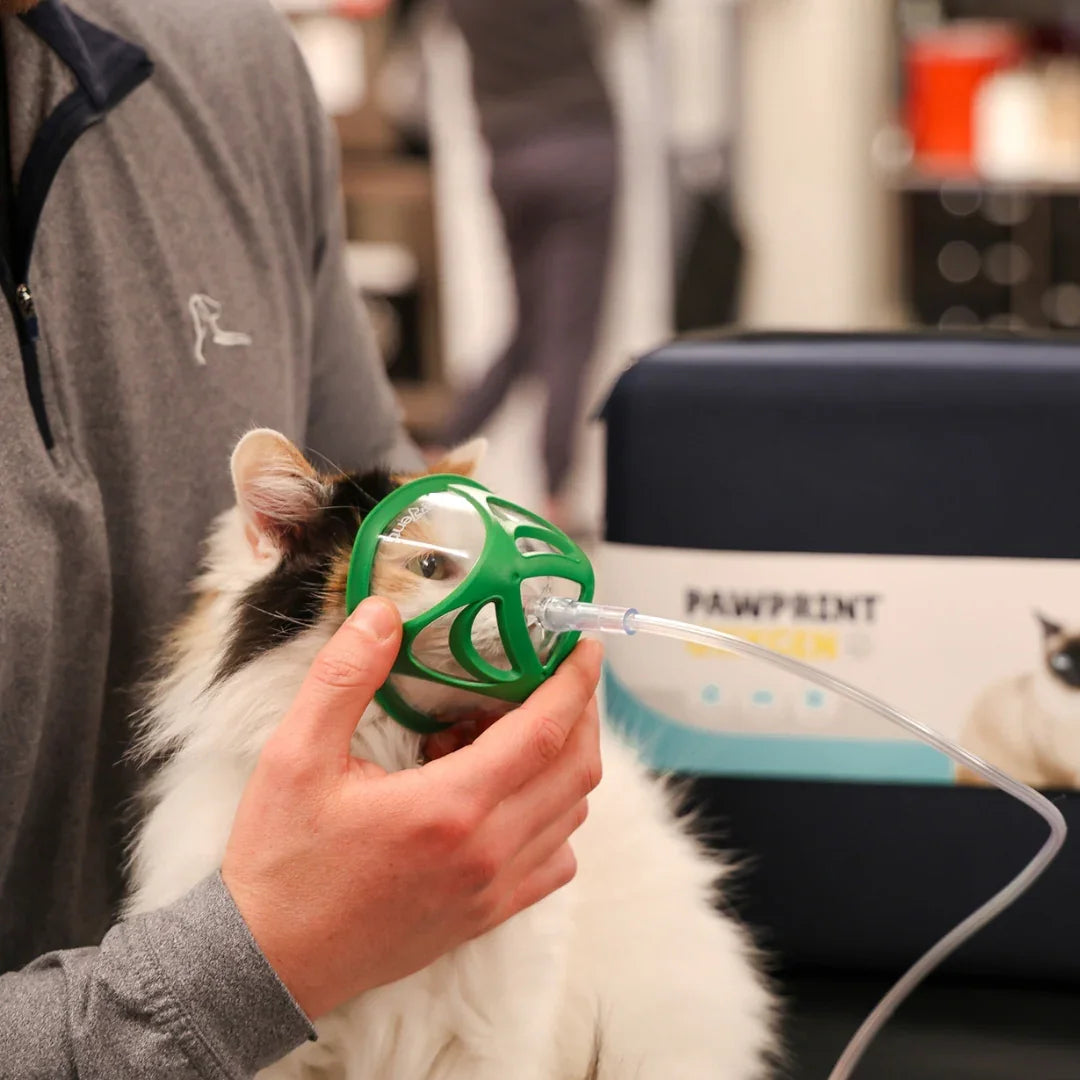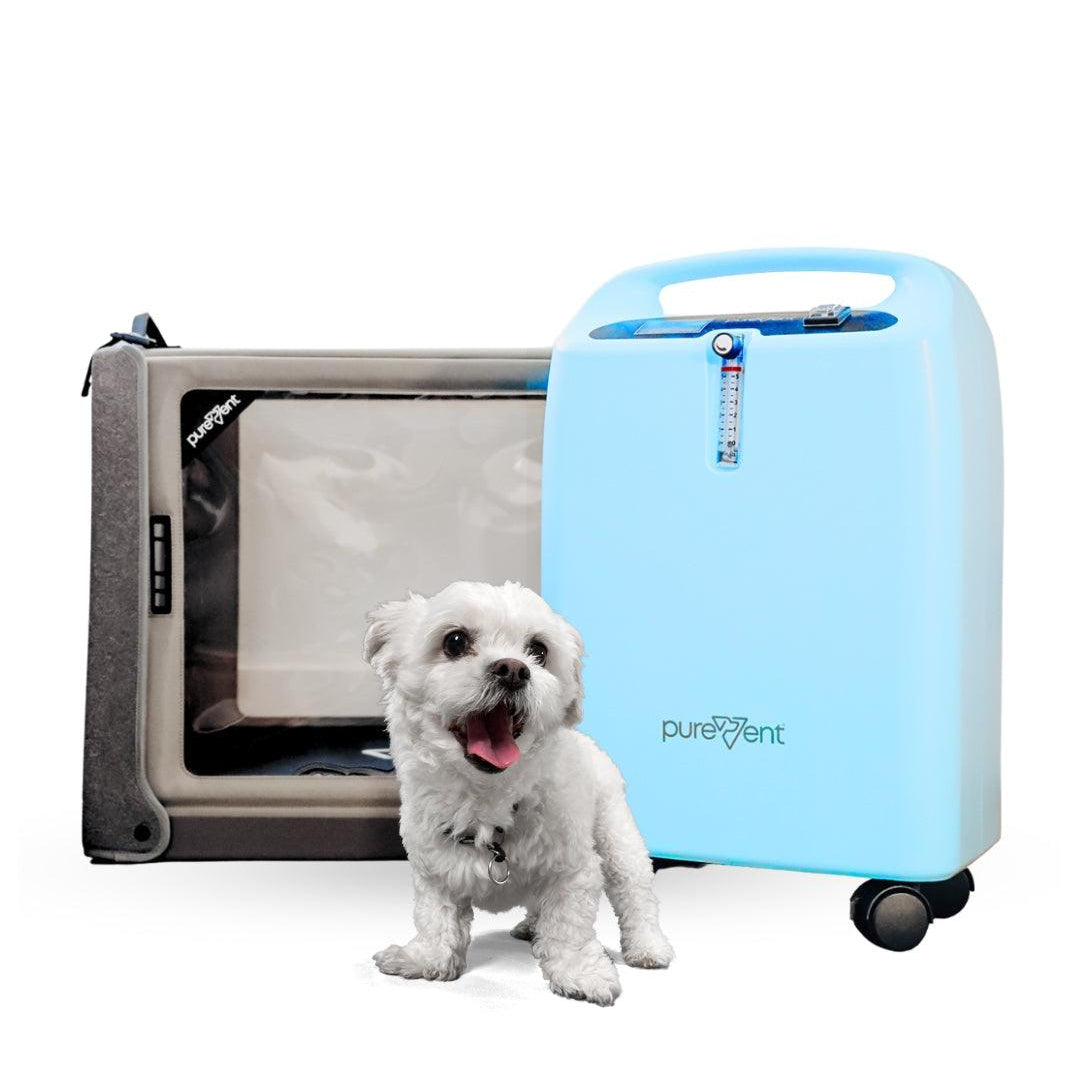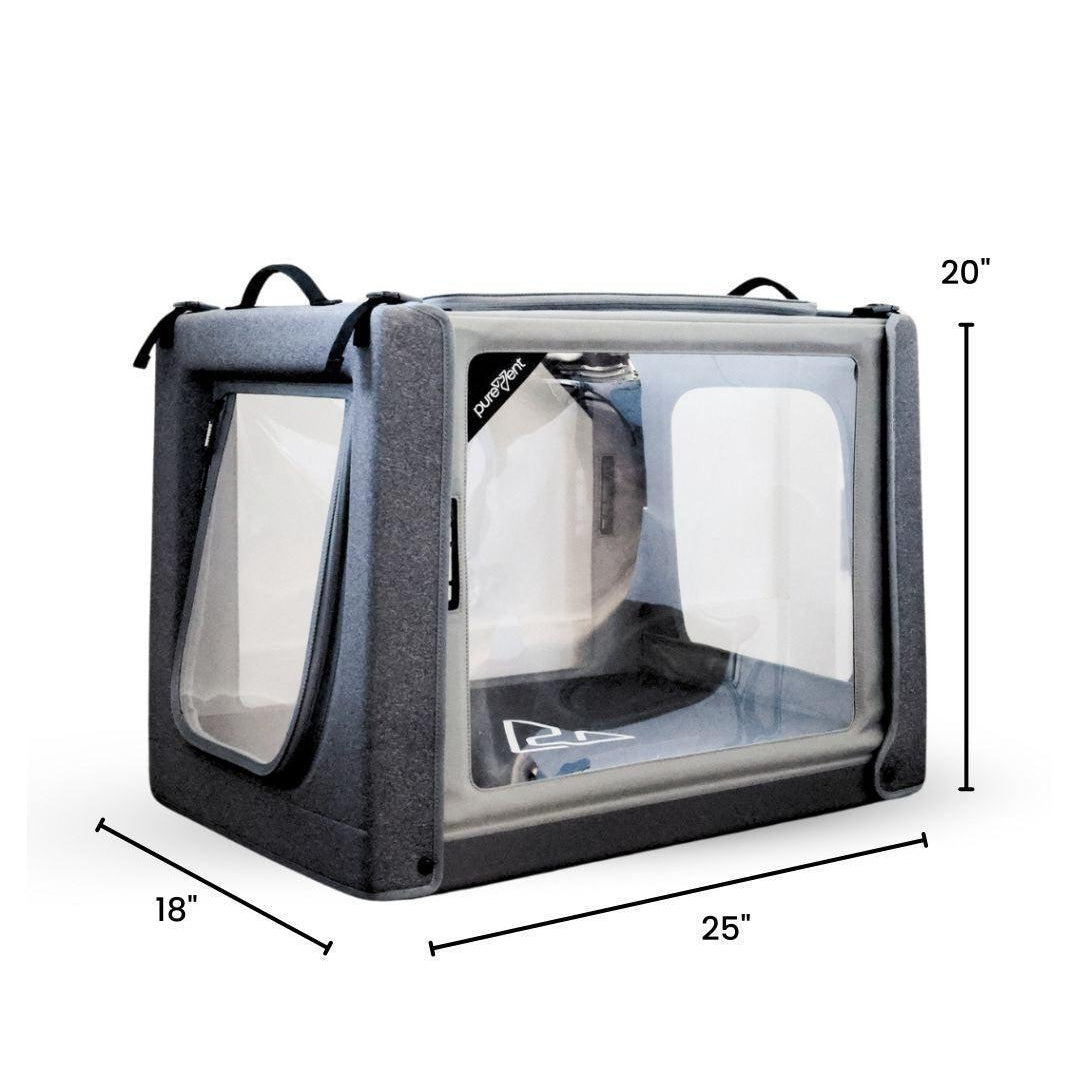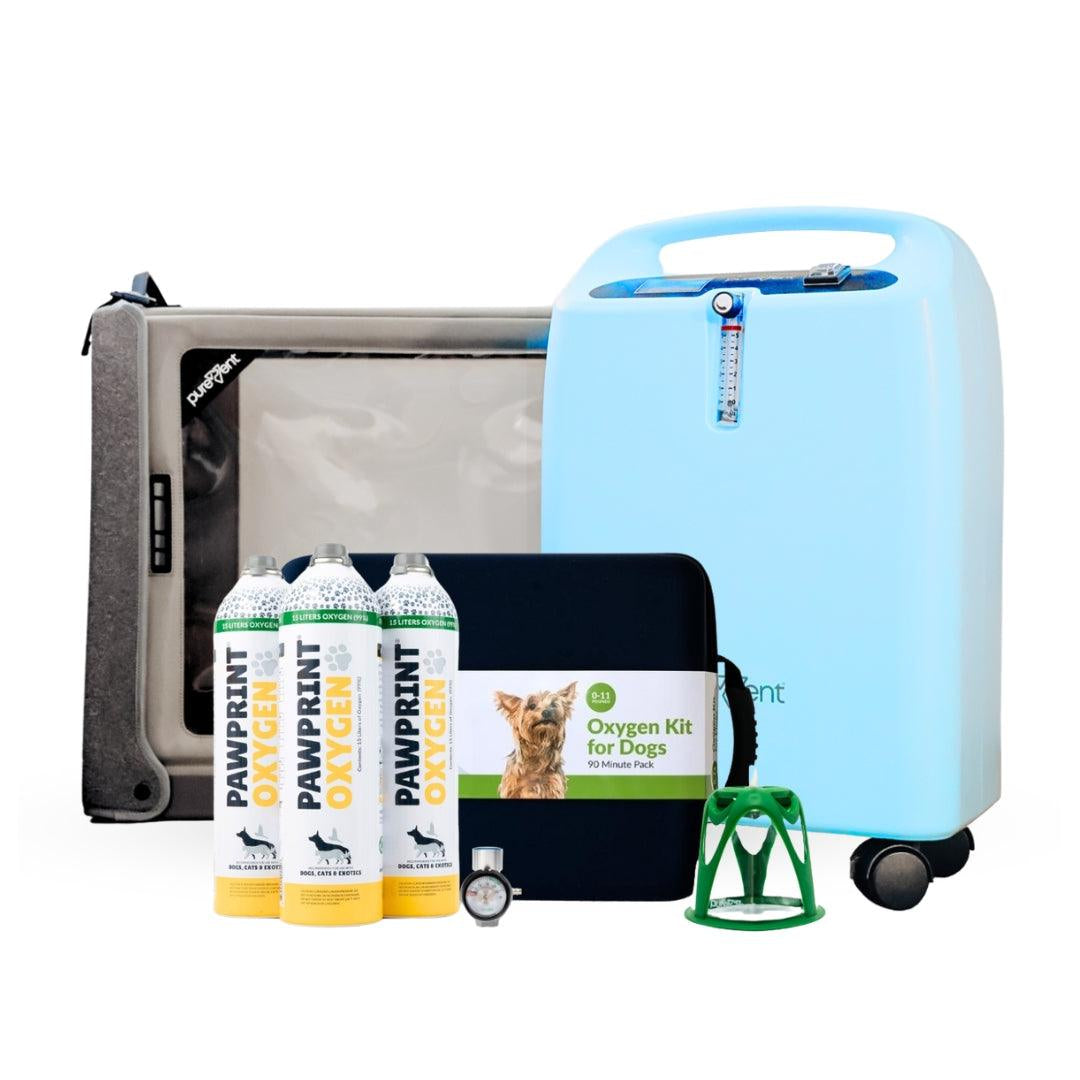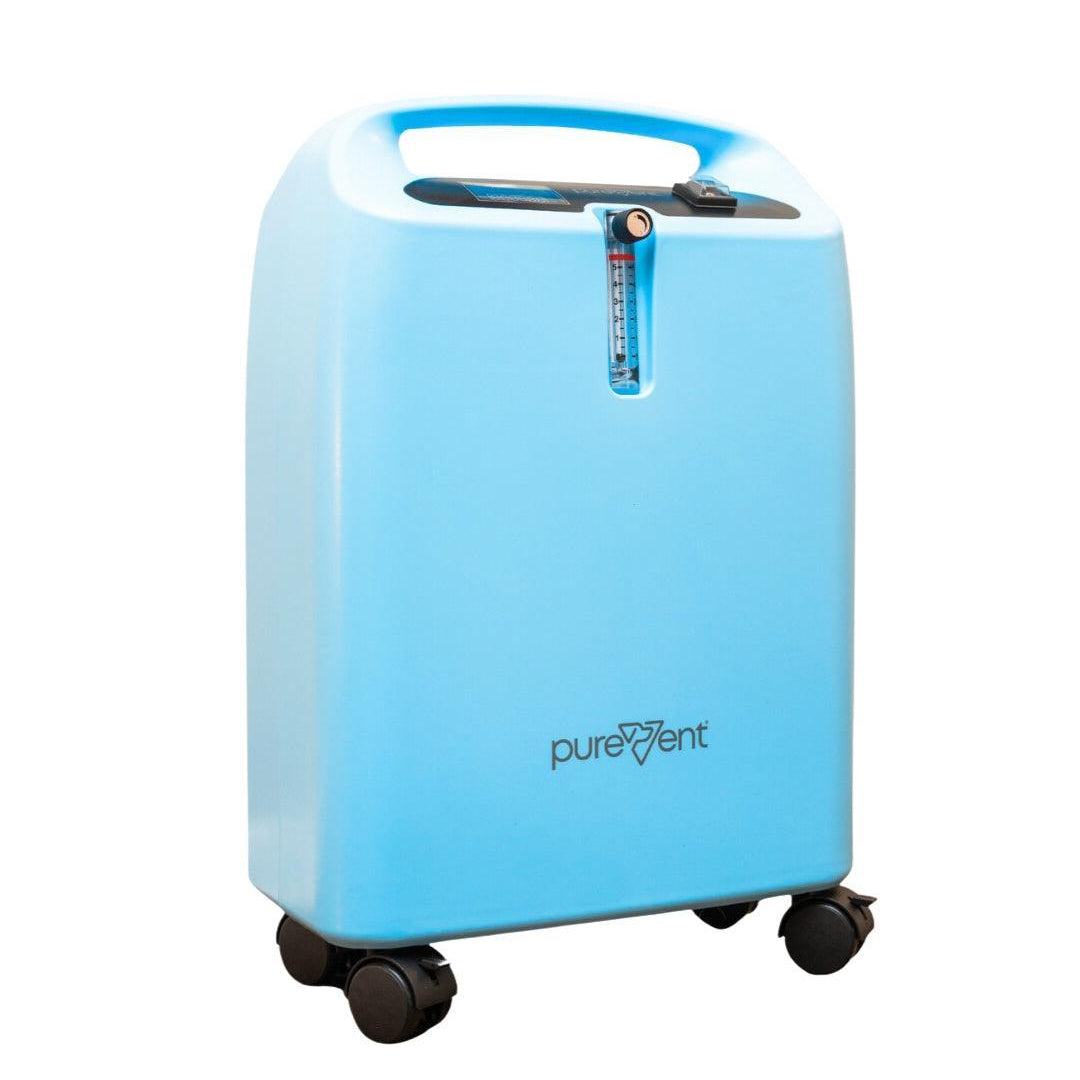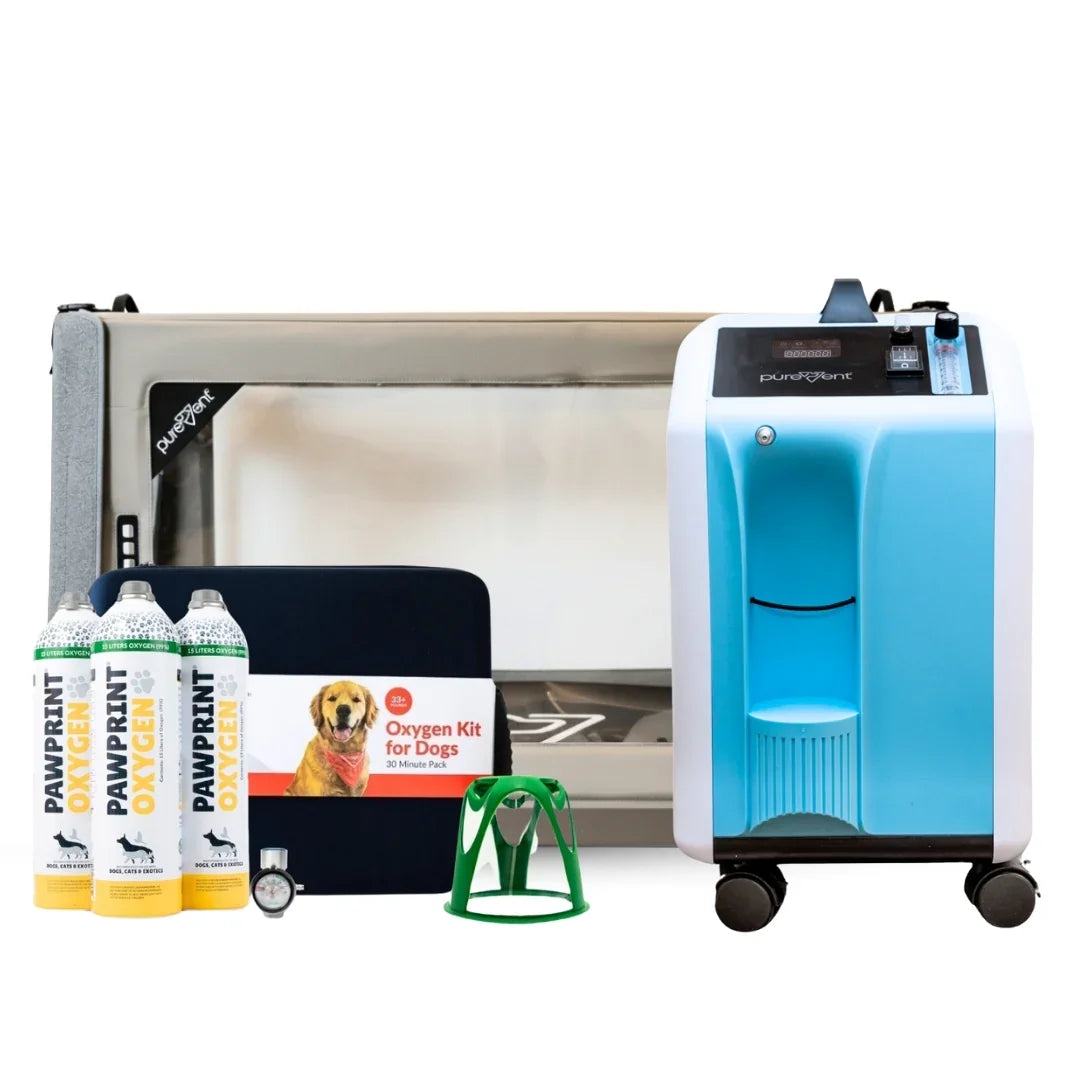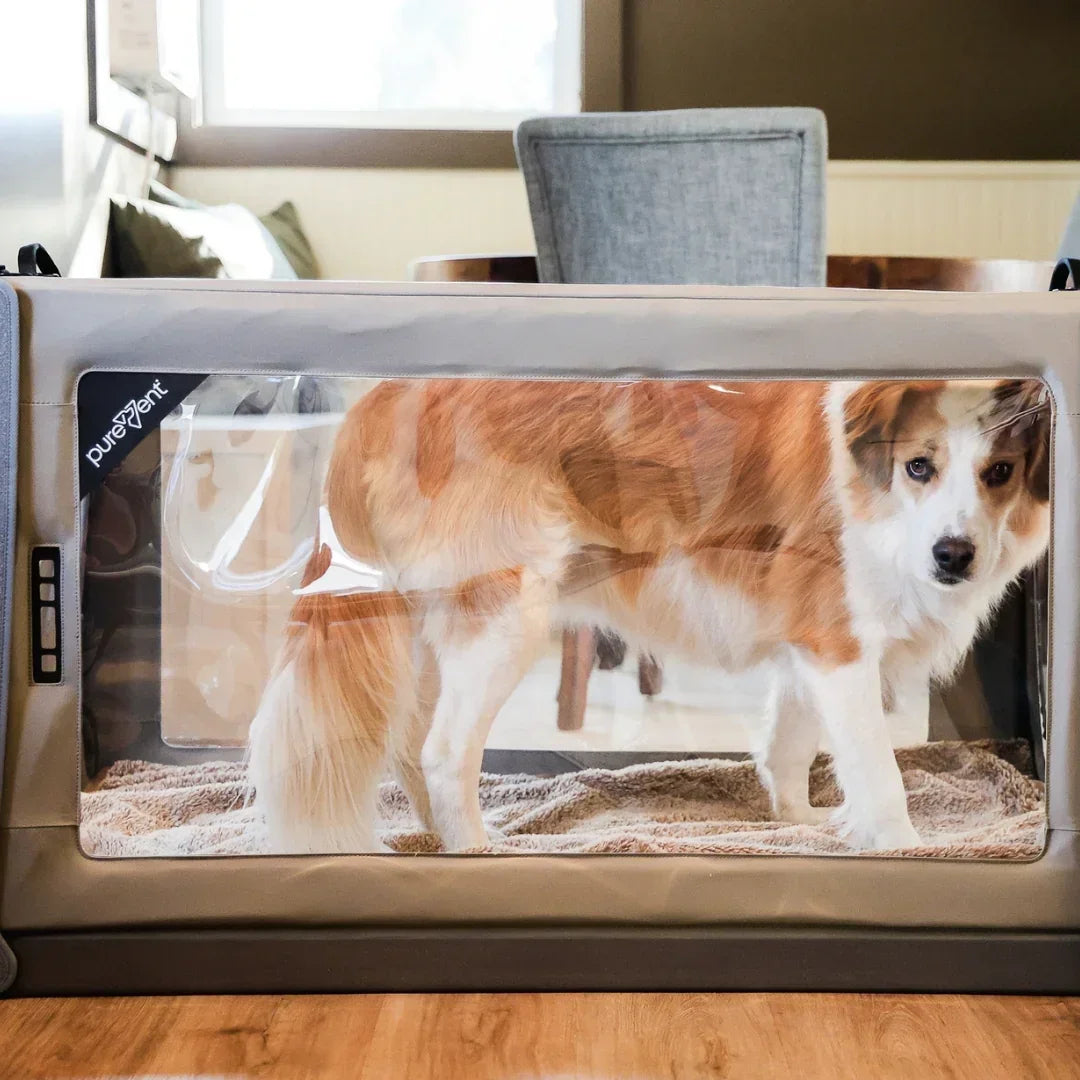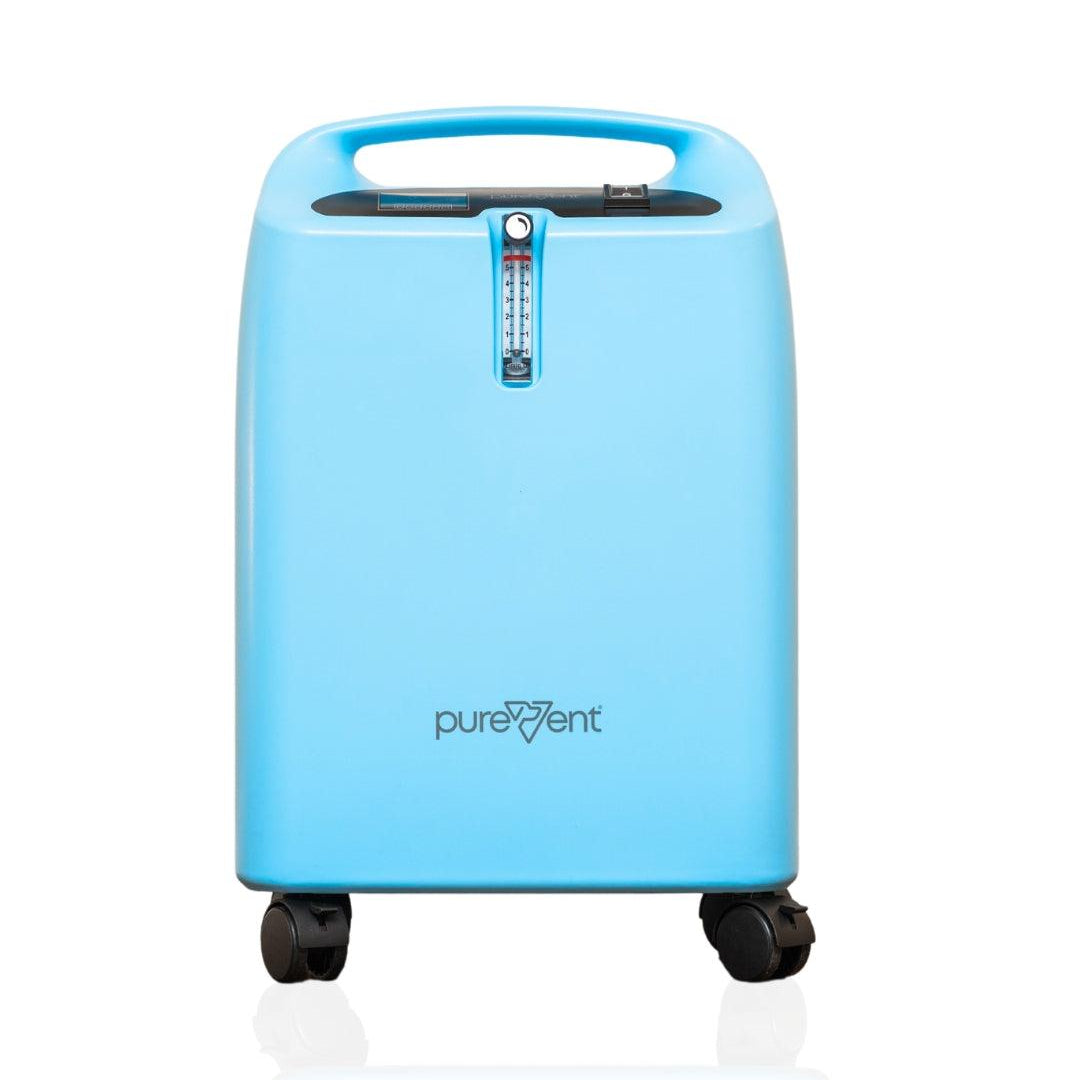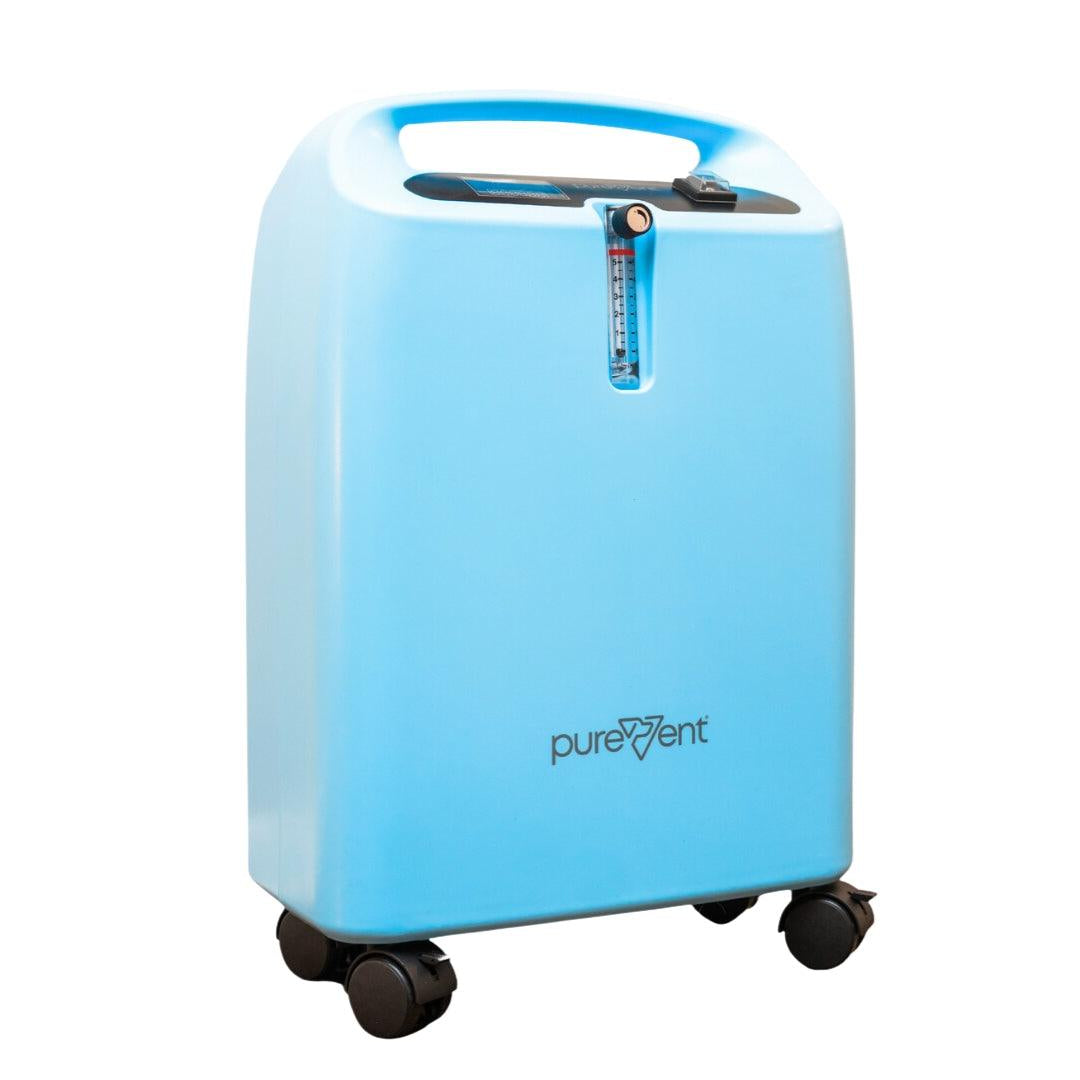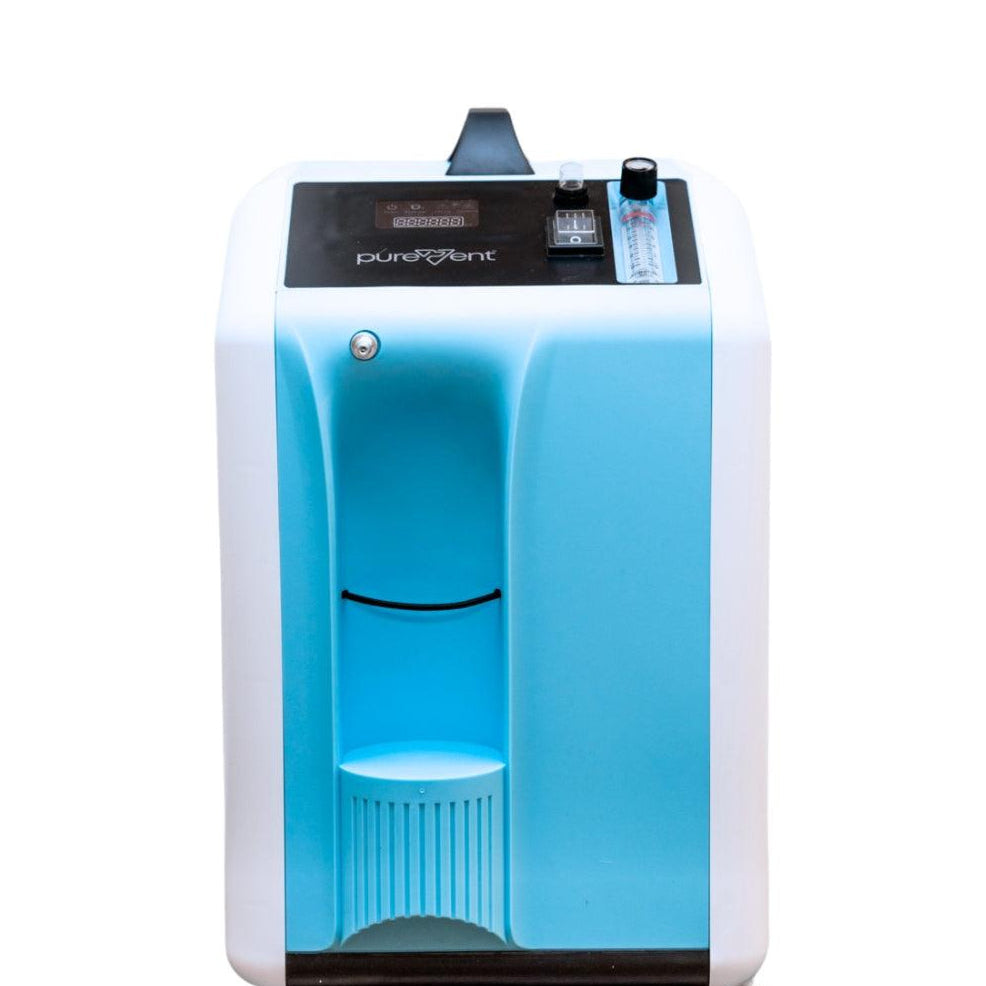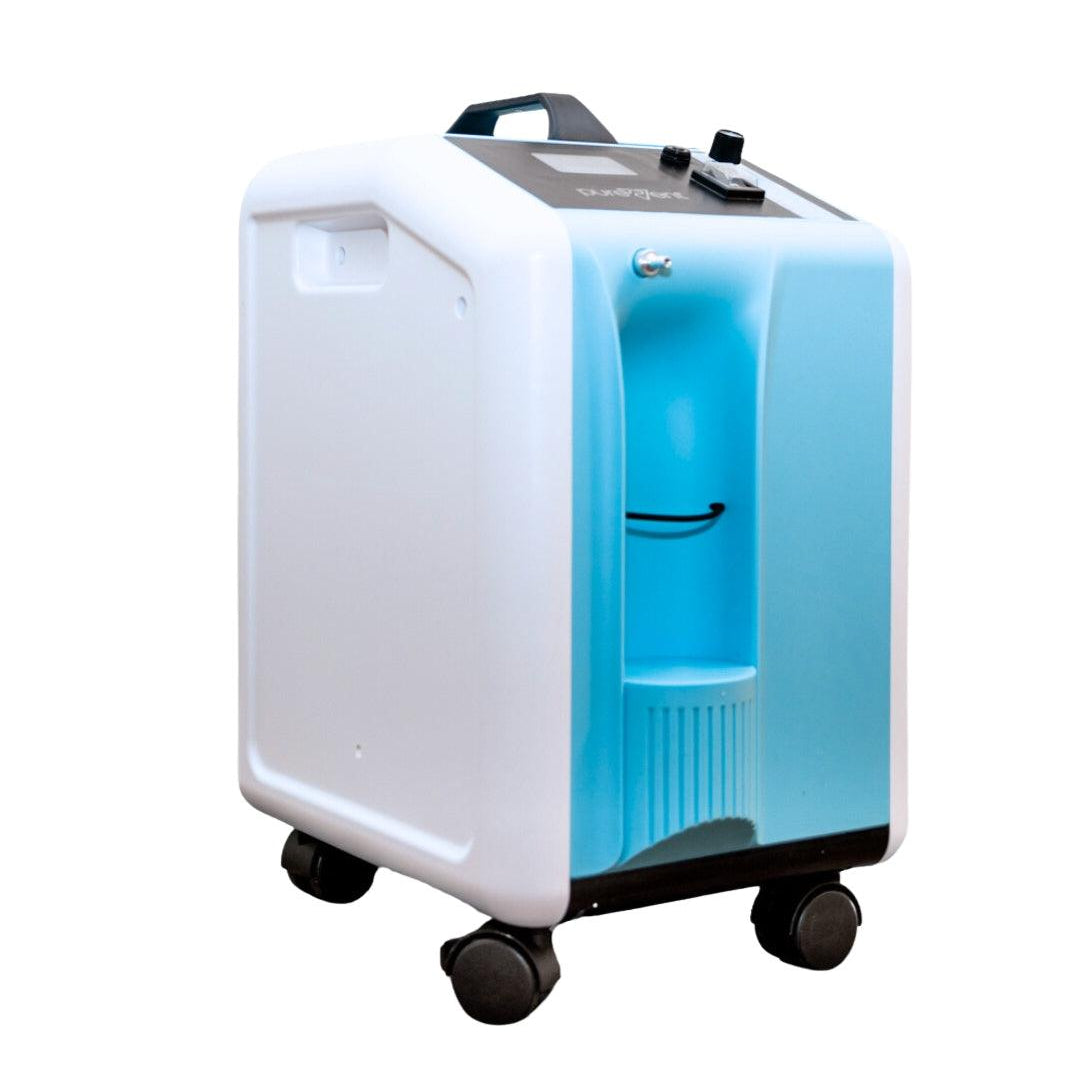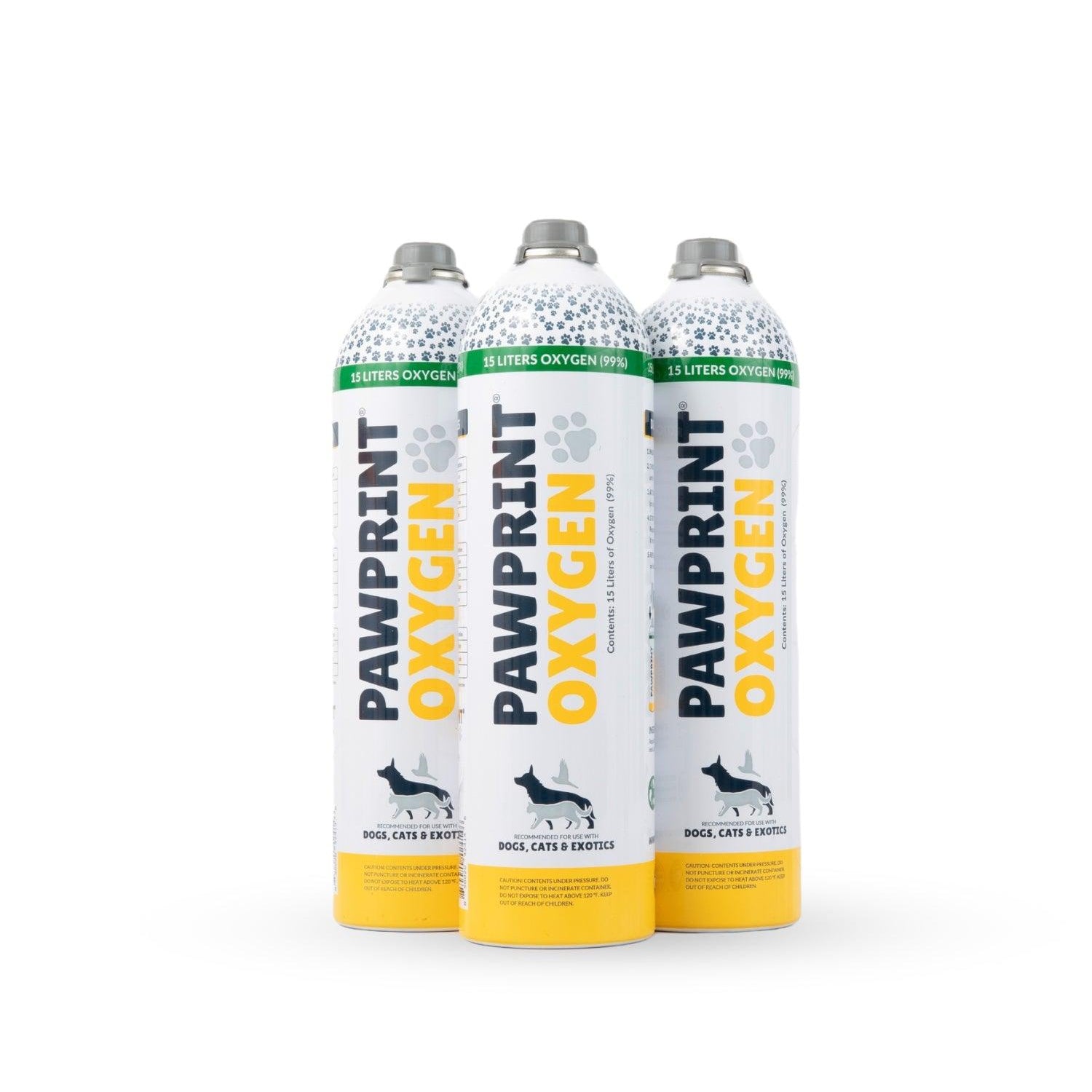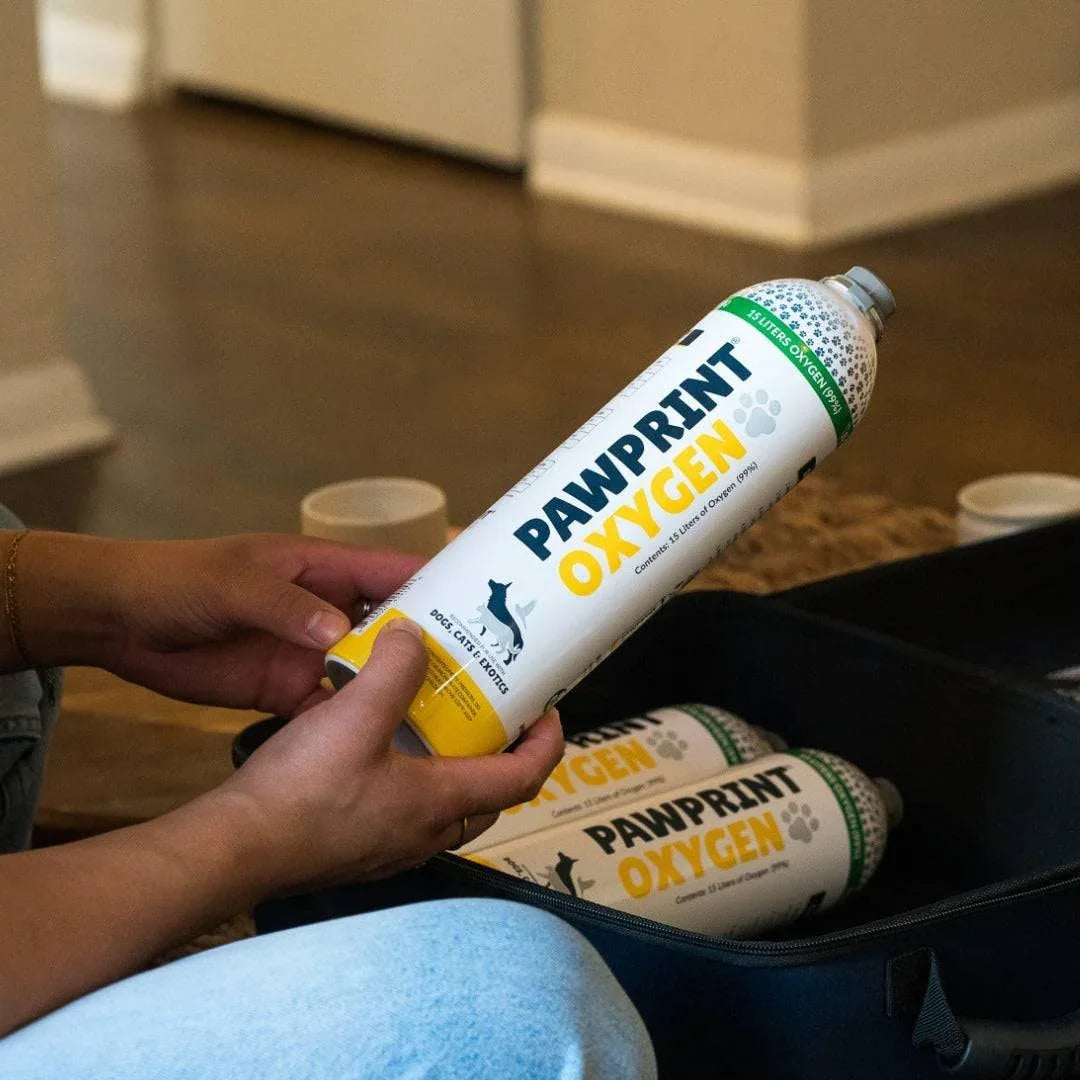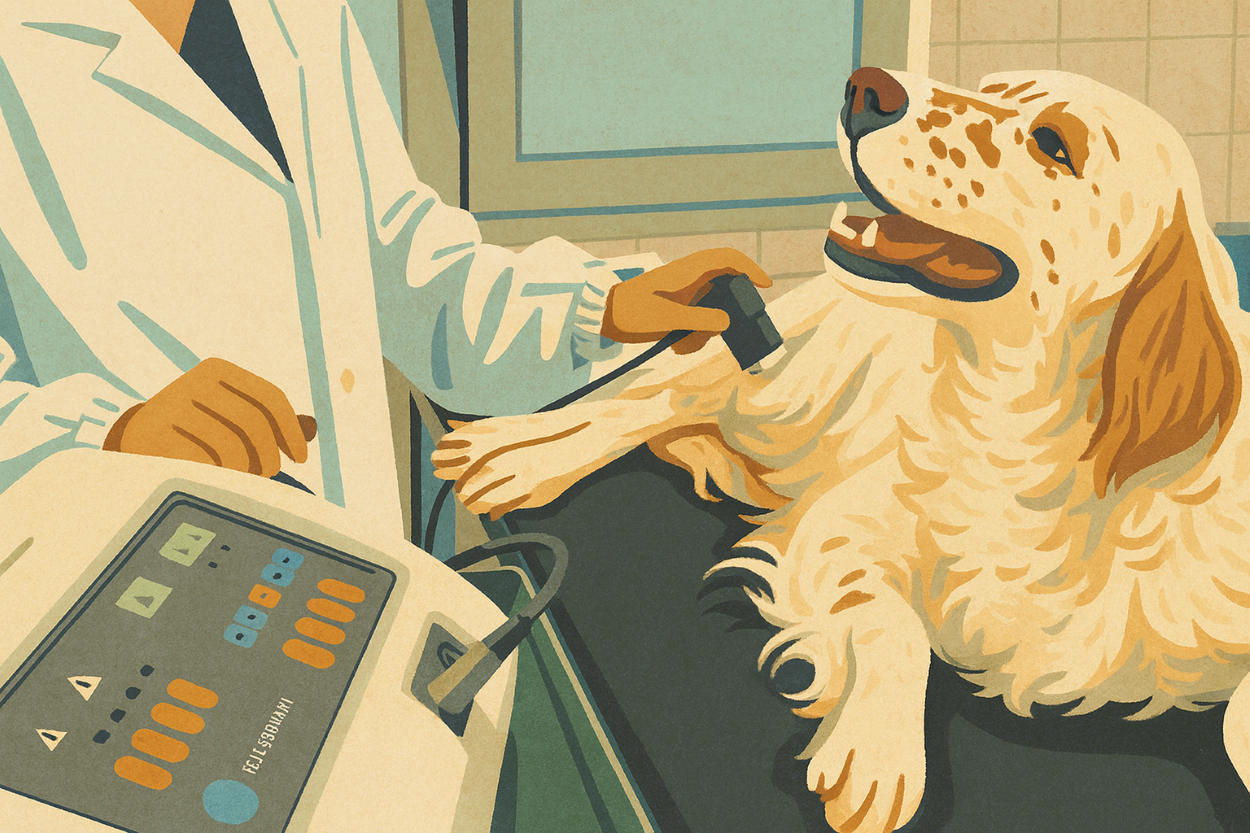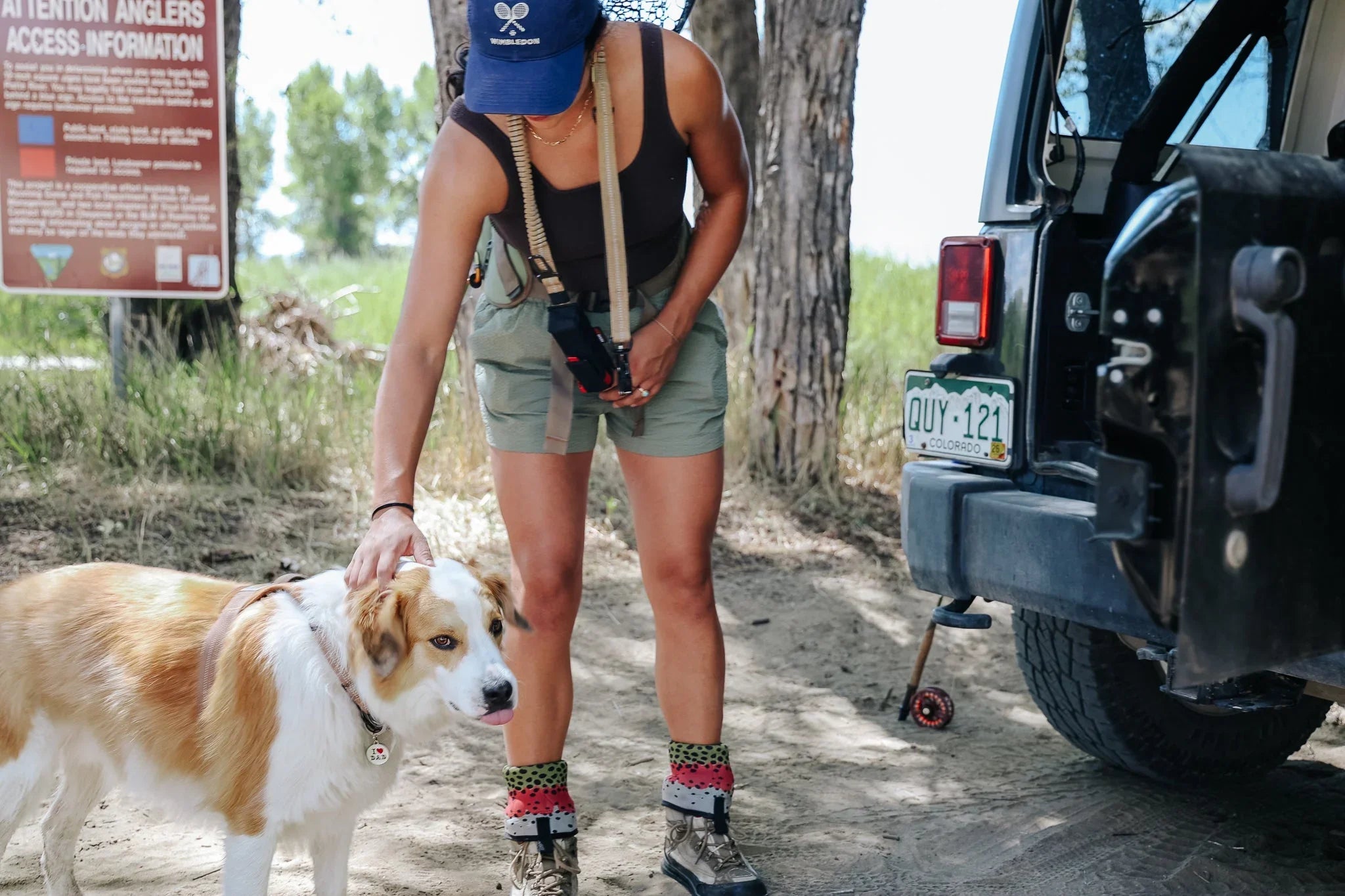In this article, we'll discuss the different use cases for our products, including the Portable Oxygen Kit, which is used for episodic respiratory distress, and the Oxygen Concentrator and Oxygen Chambers, which are used together to administer long-term oxygen therapy. Oftentimes, pets can benefit from both portable oxygen and extended therapy options.
Table of Contents
The Portable Oxygen Kit Consists of Three Parts:
15 Liter portable oxygen canisters
PureVent pet oxygen mask and oxygen tubing
Pre-set flow regulator
Neatly packaged in an EVA case for easy storage and access
Instruction manual with easy to follow set up and usage guides
Each portable oxygen kit is customized to your pets needs, so be sure to check out our different oxygen kits based on your pet's species and weight!

Uses for the Portable Oxygen Kit
To manage respiratory distress, resulting from a dynamic obstruction such as collapsing trachea or laryngeal paralysis. In these situations, it's important to administer portable oxygen at the first signs of respiratory distress in order to stop the cycle of dyspnea, or labored breathing.
To support patients suffering from respiratory distress related to heart failure on the way to emergency veterinary care. Pets with heart failure can become oxygen-depleted quickly. It's important to get them to the ER as soon as possible, and your veterinarian may recommend using a portable oxygen kit to administer oxygen on the way.
To support patients suffering from respiratory distress related to asthma, hypertension, anxiety, trauma, heat stroke, and other conditions. Respiratory distress can strike at any time, so ask your veterinarian if supplemental oxygen is right for your pet.

The Portable Oxygen Kit is can be the first line of defense in a respiratory emergency to deliver oxygen on the go. Whether you use the portable oxygen kit at home to get over an episode or to support your pet on the way to emergency veterinary care.
Does Pawprint Oxygen supply medical-grade concentrators?
Yes, Pawprint Oxygen sells medical-grade, continuous flow oxygen concentrators that support a safe environment for your pet during oxygen therapy. We have two models:
- PureVent 5L Oxygen Concentrator: This model has a maximum flow rate of 5 liters per minute, which is required for the standard oxygen chambers.
- PureVent 10L Oxygen Concentrator: This model has a maximum flow rate of 10 liters per minute, which is required for the large oxygen chambers.
Do I need to refill the oxygen concentrator with more oxygen?
No, you do not need to refill an oxygen concentrator. It constantly generates oxygen by pulling in the room air and concentrating the oxygen down to 90% oxygen gas, so you never need to worry about running out of oxygen.
What maintenance is required for the oxygen concentrator?
These machines are very easy to use and require little maintenance. Other than the occasional wipe-down to remove excess dust and debris, there are two filters within the concentrator. The first filter you’ll see on the back is the pre-mesh filter. This can be removed and rinsed as needed with warm soapy water and allowed to dry completely before putting it back on the machine (much like your vacuum’s sponge filter). Behind the pre-mesh filter is the box filter, which does not need to be replaced until you’ve reached 5,000 hours (the hour-meter is the small digital display on the side of the unit) or one year of steady use. If you are renting your concentrator, we will ensure your box filter is taken care of before sending out your unit!
The Standard Oxygen Chamber requires a flow rate of at least 5 liters per minute. The Large Oxygen Chamber requires a flow rate of 10 liters per minute.
Uses for Oxygen Concentrators and Oxygen Chambers
Oxygen concentrators are used in tandem with an oxygen chamber to administer oxygen therapy at home. Here are a few questions to consider when determining if you need an oxygen concentrator and chamber are right for your pet:
What administration method works best for your pet?
Some pets prefer the pet oxygen mask, which works well if your pet likes to be held or if you need to administer portable oxygen on the go. Some pets prefer to be in an oxygen chamber, which requires an oxygen concentrator to provide it with oxygen.
Do you need to administer oxygen at home or on the go?
The oxygen concentrator is a stationary unit requiring a power wall outlet to administer oxygen therapy. It cannot be used in a car or other vehicle. If you need portable oxygen, consider the portable oxygen kit.
What flow rate (dosage) of oxygen does your pet need?
The oxygen flow rate for extended therapy depends on your pet's weight, condition, and the oxygen administration method you are using. Your veterinarian needs to recommend the oxygen flow rate that is best for your pet. You can also refer to this article, listing out pet's weights and appropriate flow rates for oxygen. Portable oxygen kits are set to a designated flow rate based on your pet's weight and species.
The standard sized oxygen chamber require at least 5 Liters per minute of continuous flow, medical grade oxygen. We recommend achieving this oxygen flow rate with the PureVent 5L Oxygen Concentrator.
The large sized oxygen chamber requires at least 10 Liters per minute of continuous flow, medical grade oxygen, which we recommend achieving with the PureVent 10L Oxygen Concentrator.

It's important to supply the recommended oxygen flow rates to the oxygen chamber in order to achieve safe levels of oxygen and carbon dioxide, as well as to reduce heat and humidity build-up. Once you set the oxygen flow rate, you can adjust the oxygen level in the chamber by using the Venturi System, which is included with every chamber sold by Pawprint Oxygen. Do not attempt to change the flow rate on the concentrator, as that could result in unsafe levels of carbon dioxide and heat building up in the oxygen chamber.
How Both Types of Oxygen Can Be Used Together
While both options for oxygen therapy operate independently, many pets benefit from having both, portable oxygen and extended oxygen.
A pet primarily homebound and prescribed to receive 1-2 hours of routine oxygen therapy sessions each day may be best suited for an oxygen concentrator and oxygen chamber. However, that pet may need a portable oxygen source during walks, trips, or in an emergency on the way to the ER. In this case, it's a good idea to keep a Portable Oxygen Kit on hand.

